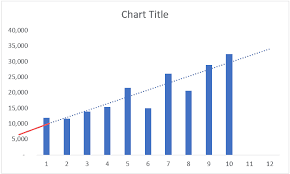Do Robots Dream of Logistics Success?
Welcome to the 74th edition of The LogTech Letter. TLL is a weekly look at the impact technology is having on the world of global and domestic logistics. Last week, I looked at the emergence of rolling funds in venture capital, and what it might mean to the world of logistics. This week, I’m getting metaphysical as I think about the proper roles for systems and people in logistics.
As a reminder, this is the place to turn on Fridays for quick reflection on a dynamic, software category, or specific company that’s on my mind. You’ll also find a collection of links to stories, videos and podcasts from me, my colleagues at the Journal of Commerce, and other analysis I find interesting.
For those that don’t know me, I’m Eric Johnson, senior technology editor at the Journal of Commerce and JOC.com. I can be reached at eric.johnson@ihsmarkit.com or on Twitter at @LogTechEric.
There is much angst in the world over the role of automation and where humans fit into it. Terrifying video posts of Boston Dynamics robots becoming increasingly lifelike lie on the ominous end of the spectrum. Consistent and helpful chat bots lie on the other. Somewhere in the middle is a ton of enterprise software and hardware, areas where humans need to either kickstart a process handled by a program, or finish off a process instigated by a program.
I’ve touched on this messy middle before, both in terms of keeping humans in the loop, and in terms of whether automation will reduce the number of jobs in logistics. But today I’m going to try to analogize about the best way to think about humans and systems interacting in the movement of freight.
Let’s try to simplify this as much as possible: the human brain is a great processor of information, but it has limits as to how many inputs it can process simultaneously. This is best exemplified by how inefficient I become when I’m simultaneously being told to take out the trash and hear my son tell a bad joke while my dog is whining to go for a walk. That’s when my system crashes.
The brain is a great processor, but it needs assistance, some way of compartmentalizing inbound information and outbound decisions. So that’s one area where technology interacts with humans. The other area is in memory. We humans generally think we have strong memories, but aside from a few genius-savants, our detailed memory is actually awful, and can seriously betray us.
What we lovingly refer to as gut, intuition, or instinct is actually our brains’ way of smoothing over its inability to remember crisp details in the way a photo provides a true picture of a static event. Our brains smooth over cracks and gaps in our recall, and generally shunt things into two types of memories: memorable and unmemorable. Memorable information is either really good or really bad stuff that sticks out and gets filed in the “don’t let this happen again” or “we need to make this happen again” folders. Unmemorable stuff recedes into the muscle memory part of the brain where we go on autopilot and actually let our powerful brains do their job best without the interference of emotion.
Either way, those rough edges and variances get smoothed out in the way a trend line accounts for the ups and downs of a chart.
But the memories aren’t perfect. It’s either a problem of storage or of a glitch that doesn’t allow us to store as much as we can. Either way, machines are great at storage and humans have already gotten pretty good at understanding how to efficiently access that storage.
So if humans are good at converting (a certain level of) processing and fuzzy memory into decisions, and machines are good at assisting in the compartmentalization of information and in creating detailed memories, what does that mean in the context of logistics?
Well, if 2020 and 2021 have taught us anything, it’s that the chief role of supply chain managers is adaptability and creativity. Being adaptable to changing circumstances and creative enough to find solutions to problems. Machines are not yet great at these things; they are still the micro-processor and infinite information storage bins that we rarely take full advantage of. This will eventually change. Models will eventually evolve to understand not just what decisions we typically make, but why we make them.
A shipper that needs to bid for capacity more often, or is forced to unexpectedly move to the spot market…are the tools they have in place set up to handle that in an automated fashion? Likely not. Are they even set up to produce automated guidance? Again, most likely not.
Until the systems understand the what and the why of what we do, we should think of humans as the decision-maker and the system as the storage and the RAM.
Here’s a roundup of recent pieces on JOC.com from my colleagues and myself (note: there is a paywall):
I’ve written a bunch about the Digital Container Shipping Association the past two years, but this week I reported on a frank admission DCSA CEO Thomas Bagge made on our JOC webcast last week: adoption of DCSA standards is low among the very container lines that commissioned those standards. Click here to register for the on-demand version of the webcast, which is worth a listen.
Big shippers this week told the Federal Maritime Commission that they struggle with timely and consistent data. Data is available, they said, but can be a manual exercise. But access is not as big a problem as quality.
FourKites this week made its first acquisition of 2022, buying a niche provider in Europe that gives it access to truck and rail assets and more boots on the ground in that battleground region. Also worth reading, Emma Cosgrove at Insider taking a deeper look at FourKites’ planned acquisition activity this year. Side note: Emma is moderating a panel at TPMTech on how technology can help the industry meet ambitious decarbonization goals. Side, side note: Fab Brasca, ex Blue Yonder/JDA/i2 vet has joined FourKites (Fab has been a big help over the years in my understanding of the logistics technology space).

I’ve spoken a dozen times with Conor Hagan of Explorate, but finally got a chance to write about the Brisbane-based digital forwarder, which this week announced a $7.5 million funding round and plans to expand in Australia an eventually to Southeast Asia.
The forwarder shifl this week unveiled a payment tool that’s aligned to its shipment visibility capability, a way to help its customers time payments to account for delays in vessel arrivals or cargo availability, depending on the milestone that triggers a payment. Eventually, shifl plans to white label the solution to any party that wants to make instant freight payments, including its 3PL competitors.
And here are some recent discussions, reports, and analysis I found interesting:
Good look at why supply chain ain’t easy.
I led a discussion with Transporeon CEO Stephan Sieber and SupplyStack CEO Nick Poels about the former’s acquisition of the latter last week. (The video starts about 3 minutes in).
TPMTech Session in Focus:
From now until TPMTech in late February, I’ll be spotlighting a different session at our upcoming event, to be held Feb 24-25 in Long Beach, Calif. One consistent area I’ve focused on the past few years has been instant quoting, and the eventual progression to dynamic pricing, in ocean freight. We’ve had discussions at our LogTech events in Las Vegas and at the Virtual TPM21 last February. This year, at TPMTech, the discussion turns less theoretical and more topical. Carriers have pricing power, they have the ability to dictate which channels they want to sell through, and who they want to sell to (and exclude). So this panel will take on extra importance. Delighted to have representatives from Freightos and Agility subsidiary Shipa Freight join this discussion.
Some upcoming events I’ll be involved in:
On Jan. 26 in Las Vegas, I’ve got a fireside chat with E2open CEO Michael Farkelas at the Manifest conference, which should be a great warmup for his kickoff keynote and discussion with me at TPMTech a month later.
Disclaimer: This newsletter is in no way affiliated with The Journal of Commerce or IHS Markit, and any opinions are mine only.






